Fellow Foodies and Travellers,
Welcome to the first edition of 'Nomad Foodies’, the new name for ‘One hundred years of family food memories’.
We hope you enjoy it!
Marco and Sabrina
Ancient windmills, sparkling whitewashed buildings bedecked with pink bougainvillea, doors and shutters in shades of blue and red and tiny churches on hilltops overlooking an azure Aegean, the island of Mykonos in Greece’s Cyclades has all these beloved clichés and more. Look a little closer however and you will also find storefronts for Louis Vuitton, Fendi and other luxury goods brands, a row of brash night clubs on the waterfront and a gaggle of monster cruise ships anchored in the arc of Mykonos town’s bay. Clearly a bouzouki-soundtracked encounter with a descendant of ‘Zorba the Greek’ at a tiny taverna by the dock of an evening, is not on the cards.
I used to crew yachts in this archipelago, so I remember Mykonos well. Even then it was ‘the party island’, but decades on it’s become more like a Greek island branch of Ibiza’s club scene and I can’t help but wonder (from a Mykonian standpoint, at least), whether a destination can both win and lose the lottery at the same time. Fortunately, the food is every bit as good as I remember and arriving famished from our flight we pick the second quayside taverna we come across and enjoy the best grilled whole calamari and sardines that we’ve had in ages.
Asked repeatedly by everyone from passport control, to our airport cab driver and the taverna’s wait staff where we are staying, we tell them we are only passing through for one night on our way to the nearby island of Syros and are given the same incredulous response each time:
“What! Why Syros?”
It’s a good question, because unless we had a friend who calls the island home for the summer months each year, we would probably never have considered visiting this almost atoll, which is one quarter of the size of tiny Malta.
Syros made barely a blip on Greek Mythology or during Antiquity, (unless you count her mention in Homer’s Odyssey as the country of the swineherd Eumaeus), a stark contrast to her close neighbour the sacred island of Delos, legendary birthplace of Apollo and Artemis, which today is an open air museum of extraordinary archaeological sites. Indeed, it was not until after her 13th century conquest by the Venetians, that Syros began to make her mark as a maritime crossroads and several centuries later through an accident of history, after having declared her neutrality at the start of the Greek Revolution in 1821, that she was flooded with thousands of talented and resourceful refugees from the Aegean and beyond. These transplants built the Neo-Classical city of Ermoupoli, (aptly named after Hermes, the Greek god of Commerce) and a booming economy, that at its height in the 1860s represented almost three quarters of Greece’s GDP. For a few brief decades, Ermoupoli’s port was the Piraeus of its time, her shipyards the most important in the country and her position as an entrepôt unrivalled.
Vestiges of this extraordinary wealth are everywhere, from magnificently mouldering mansions, a perfect jewel of an opera house, designed as a miniature version of Milan’s La Scala, vast Greek Orthodox and Roman Catholic cathedrals, huge half derelict but still active docks and shipyard, a harbour and marina simply teeming with vessels of all sizes and underfoot everywhere you walk, lavish white and grey slabs of polished marble.
Cascading dramatically down to the water, the first impression of Ermoupoli is more southern Italian than Greek and indeed as we explore she more and more resembles a diminutive distant cousin of Catania in Sicily, another city we love which has a similarly heady mixture of grandeur, benign neglect and ‘gioia di vivere’ at all hours and in all seasons. The yacht charters may disappear from her marina, but unlike so many Greek islands which largely shutter up at summer’s end:
“There are 25,000 of us on this island, so why would we close?”
It’s late September so there are still some tourists, but Ermoupoli is large enough to spread out their presence relatively thinly, and indeed what we immediately notice is that the restaurants and bars here are largely filled with locals enjoying coffee and a chain smoke well into the evening, especially large groups of what we’ve come to affectionately call ‘giggling grannies’. Take for example the über cool restaurant and bar Ciel on so called Asturias ‘beach’ (actually a few stone bathing platforms) in Vaporia, the grandest part of town. In any other city this sort of place would be off limits to an older crowd, but here there are no such barriers and while we were eating lunch two large groups of elderly, double espresso-drinking ladies dominated the waterfront terrace, roaring with laughter as they posed for photos and flirted with the young waiters, forever consigning to the rubbish bin of history that cultural cliché in these isles, of solitary black-clad women of a certain age.
It’s tempting to put their zest down to the need to navigate this vertiginous city by steep stone and marble staircases, as it rises up its two hills above the water layer by layer, like an amphitheatre. We are only in the second or third row of the ‘Circle’ but climbing up to our apartment laden with a large watermelon and sundry other heavy groceries in 30 degree heat just about finished us off, despite a constant welcome breeze (the Meltemi blows hard at this time of year making temperatures in the Cyclades bearable on even the hottest days).
Up in the amphitheatre’s ‘Gods’ is Ano Syros, the island’s original medieval capital, where tiny cobbled alleyways and stairways to nowhere open up to glorious glimpses of the city and shipyards below and the islands of Tinos and Andros on the far horizon. Getting lost as you attempt to find the one tiny street where all the tavernas and bars are situated (confusingly called the ‘Piazza’) is also half the fun.
There’s a simple, sensual cadence to our days here which begin and end in the dress circle box of our terrace. We rise in time to catch the latest performance of the prologue, as dawn starts with complete stillness apart from the first breaths of the coming breeze. A loud peal from the nearby Church of the Assumption of the Virgin is a clarion call for flocks of swifts to fly south past our terrace from their palm tree roosts in the main square and for the cranes and heavy machinery of the Nourion shipyard to strike up, signalling that another day’s work has begun. Soon, as the sun rises far enough above the distant island of Tinos, we are retreating into a shady spot with our second cup of coffee, as down in the marina boats of all sizes begin their dance and the morning’s early ferries dock and disgorge their contents en route to Piraeus or farther flung locales in the Cyclades and plucky tugs and pilot boats guide commercial shipping in and out of the harbour. Late in the evening we resume our seats for the epilogue, until the last ferry departs into the darkness and on one especially memorable night a blood moon rose over the corniche and marina.
In between these beautiful vigils, we graze Ermoupoli’s seemingly inexhaustible line up of restaurants and bars, take in a piano recital at the opera house, indulge in fixer upper fantasies or visit one of the island’s beach villages, (Galissas and Kini are especially lovely) for a long lunch on the sand, earned by a hike up to yet another tiny, whitewashed hilltop church.
Each of these churches, like the many memorable meals we’ve eaten here, is seemingly more perfect in its sublime simplicity than the last. However, choose we must and while it’s probably recency bias, it was a recommendation from the irresistibly charming Constantinos at ‘To Limani’ restaurant on Ermoupoli’s corniche, that we’re going to pick to feature:
“It’s your final meal. You must try the deep-fried little fishes and onions- it’s a dish you’ll only find on Syros.”
Deep fried Syran little fishes and onions: Serves Four to Six
50g plus potato starch
450g whitebait, from sustainable sources
1 large onion, cut in half then sliced and separated into strips
a few sprigs of fresh dill
2 tablespoons free-range mayonnaise
1 lemon
Salt and pepper to taste
Heat a large saucepan with 7.5cm of EV olive oil to 200c. While the oil is heating up toss the whitebait and onion into the potato starch. When ready drop a mix of the whitebait and onion into the hot oil ( you may need to do this in batches ), cooking until golden, then remove to drain on kitchen paper.
Serve with lemon wedges and mayonnaise after sprinkling with chopped dill.
As the sun disappears behind Ermoupoli’s hills, the bars on the waterfront start to fill up as groups gather for a pre-dinner gossip over more coffee and cigarettes, or in our case a cocktail. It’s a time to dissect the day’s yacht arrivals or better yet to loudly commentate on their cack-handed attempts to berth their vessels elegantly. Time too for the dramatic entrance of the town’s leading man, the flamboyantly dressed harbour master. Sporting outfits such as a red silk shirt with white polka dots and matching red shorts or all white, both fetchingly coordinated with matching deck shoes and minibike, he patrols the quayside greeting or charmingly admonishing the new arrivals for their mooring faux pas.
Yet another priceless memory from an island that’s stolen our hearts.

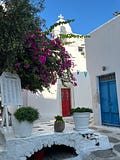


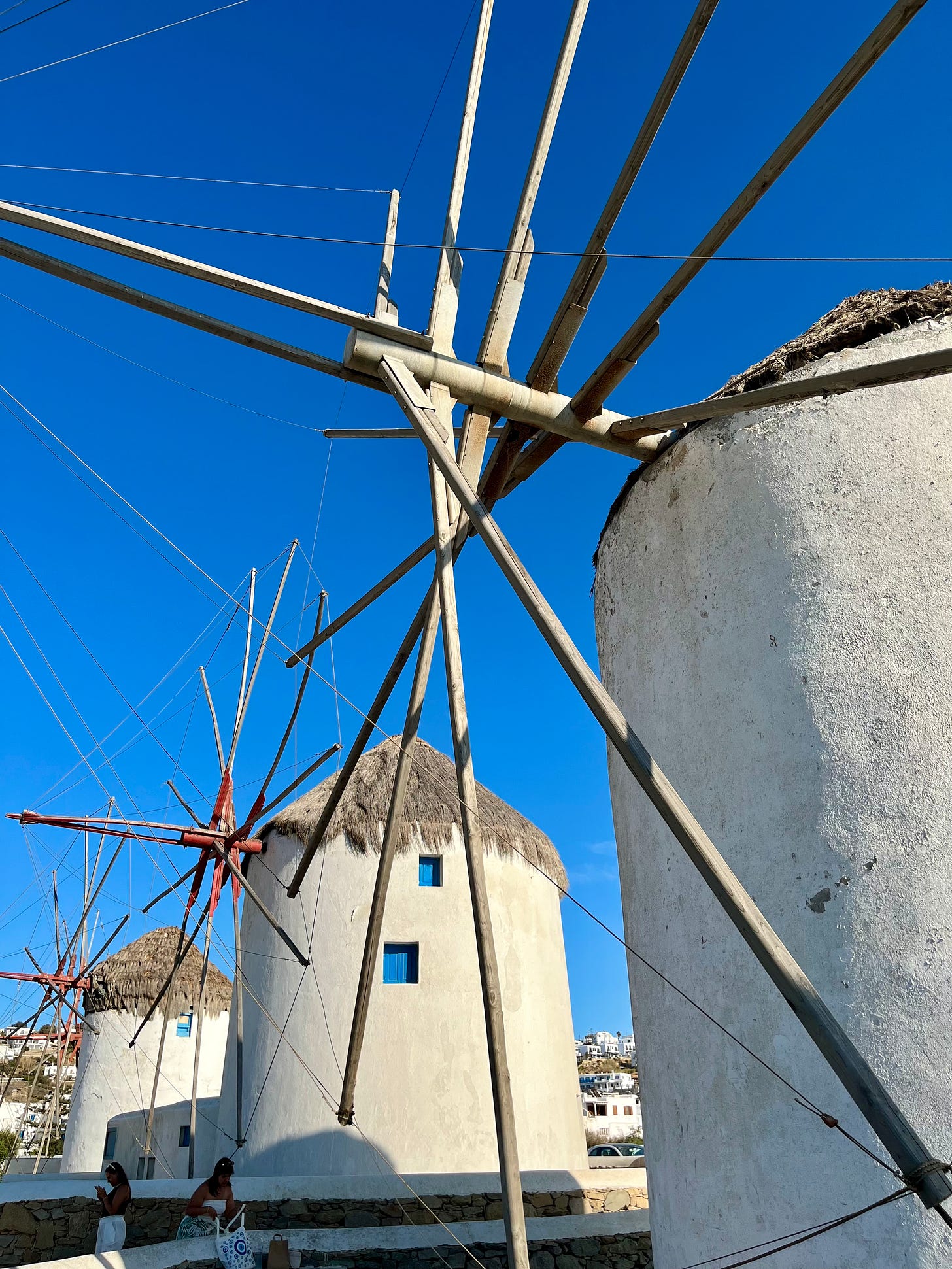
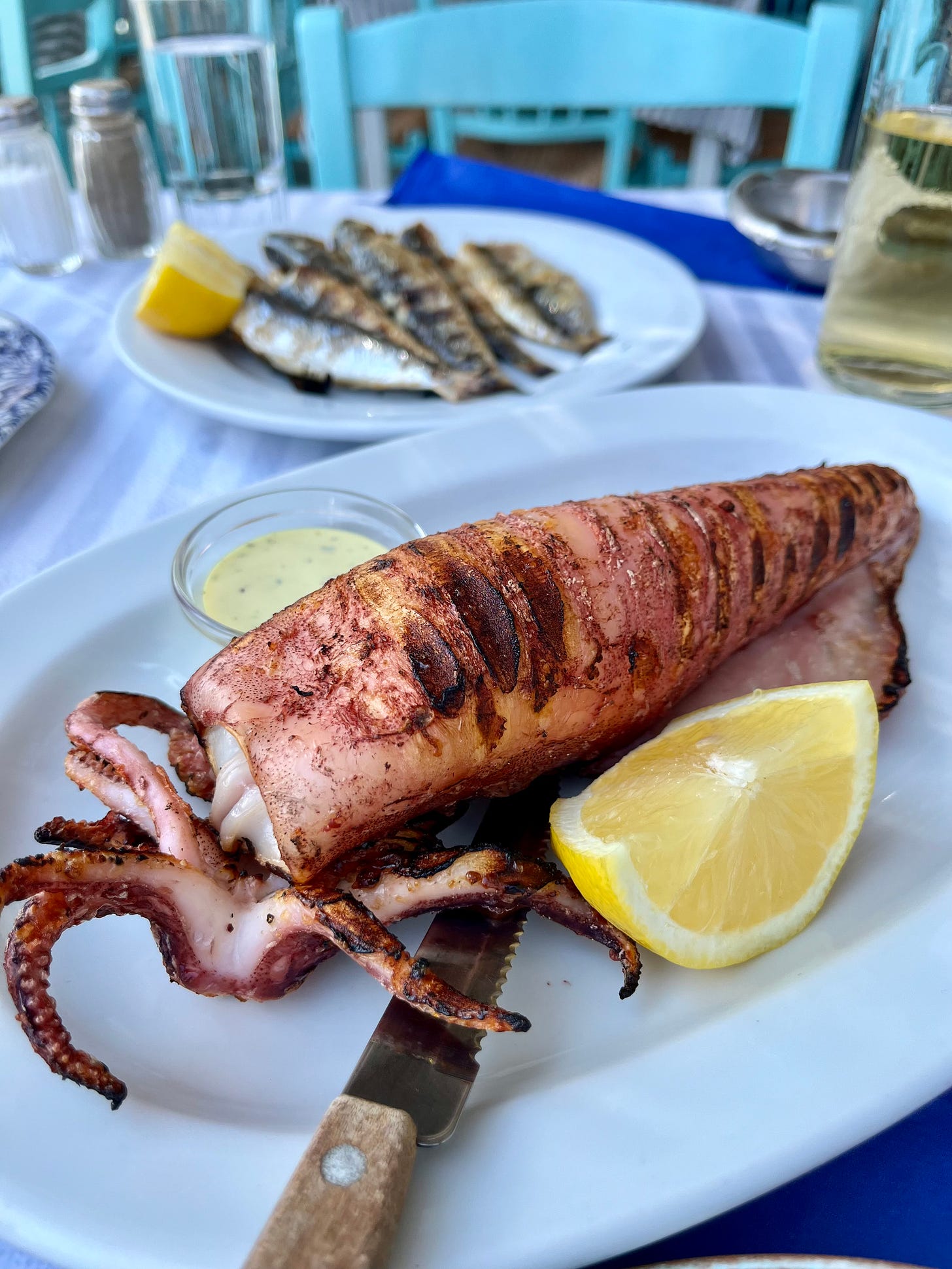
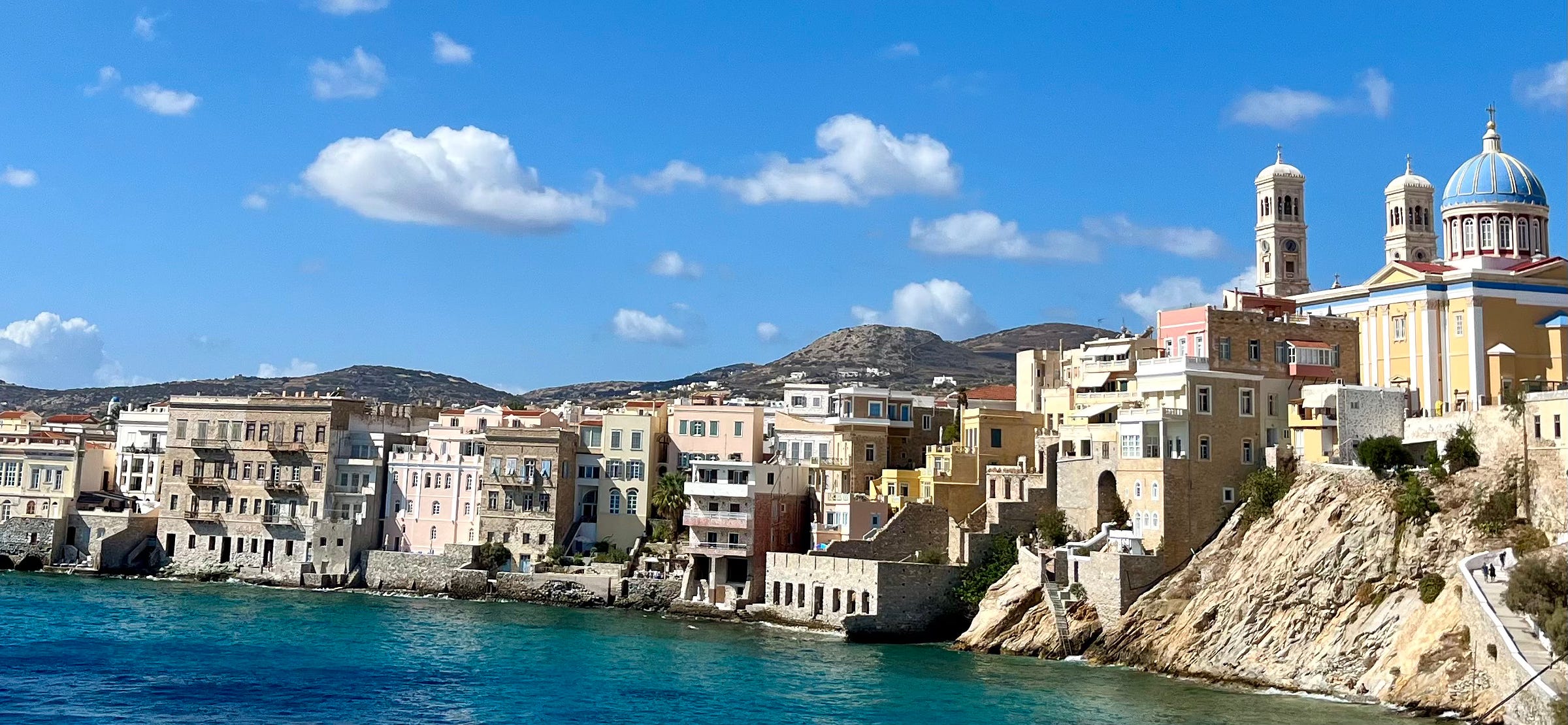
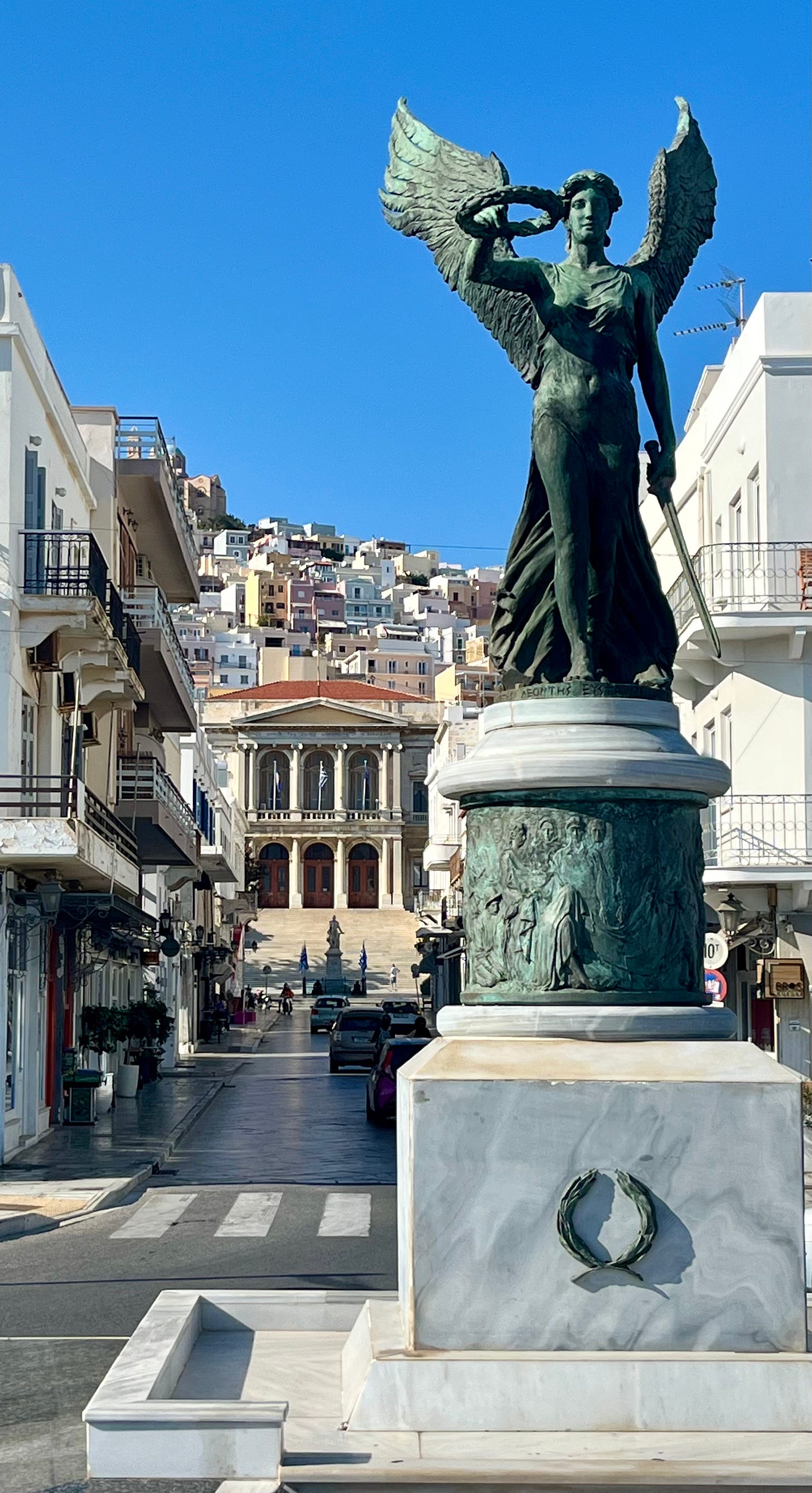
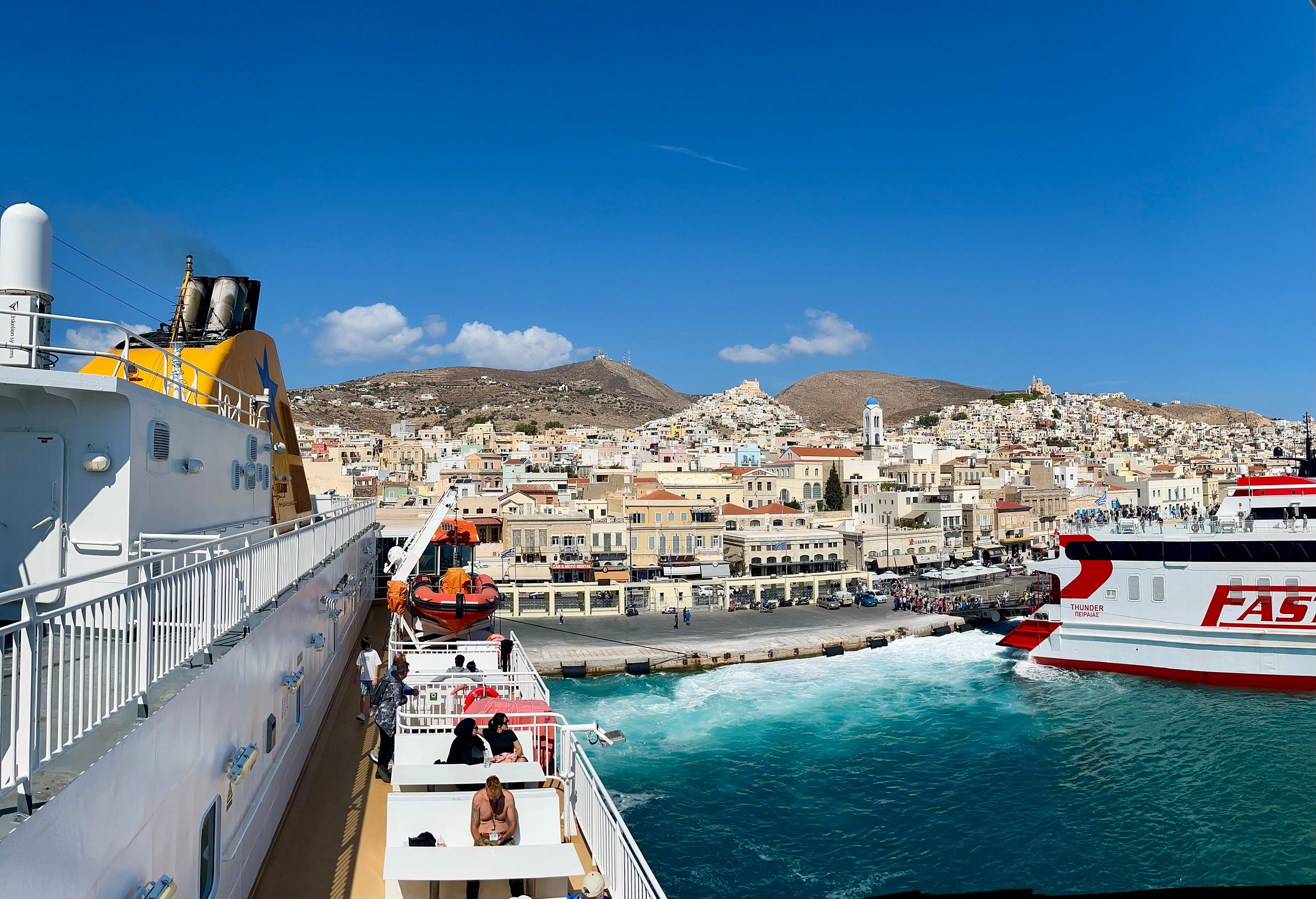
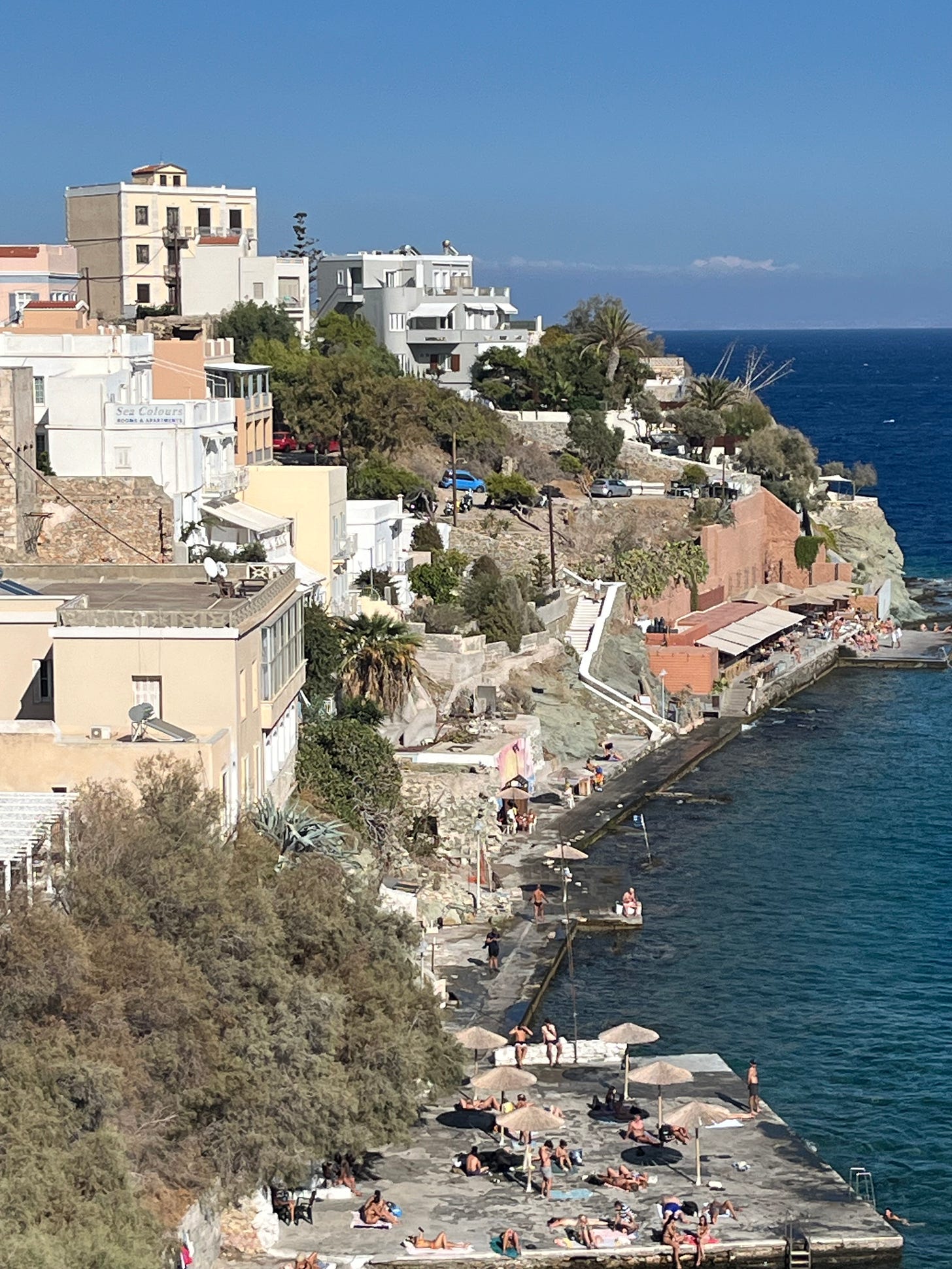
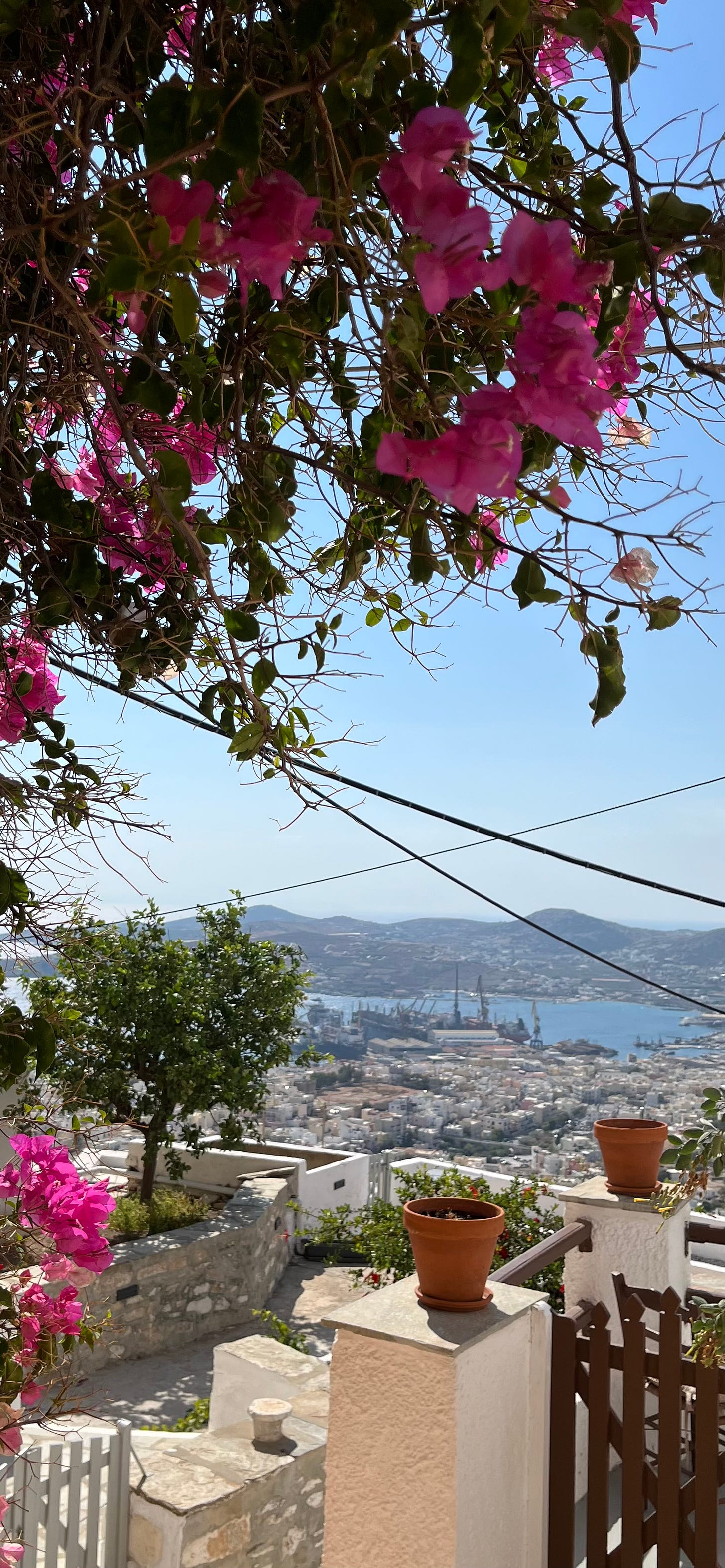
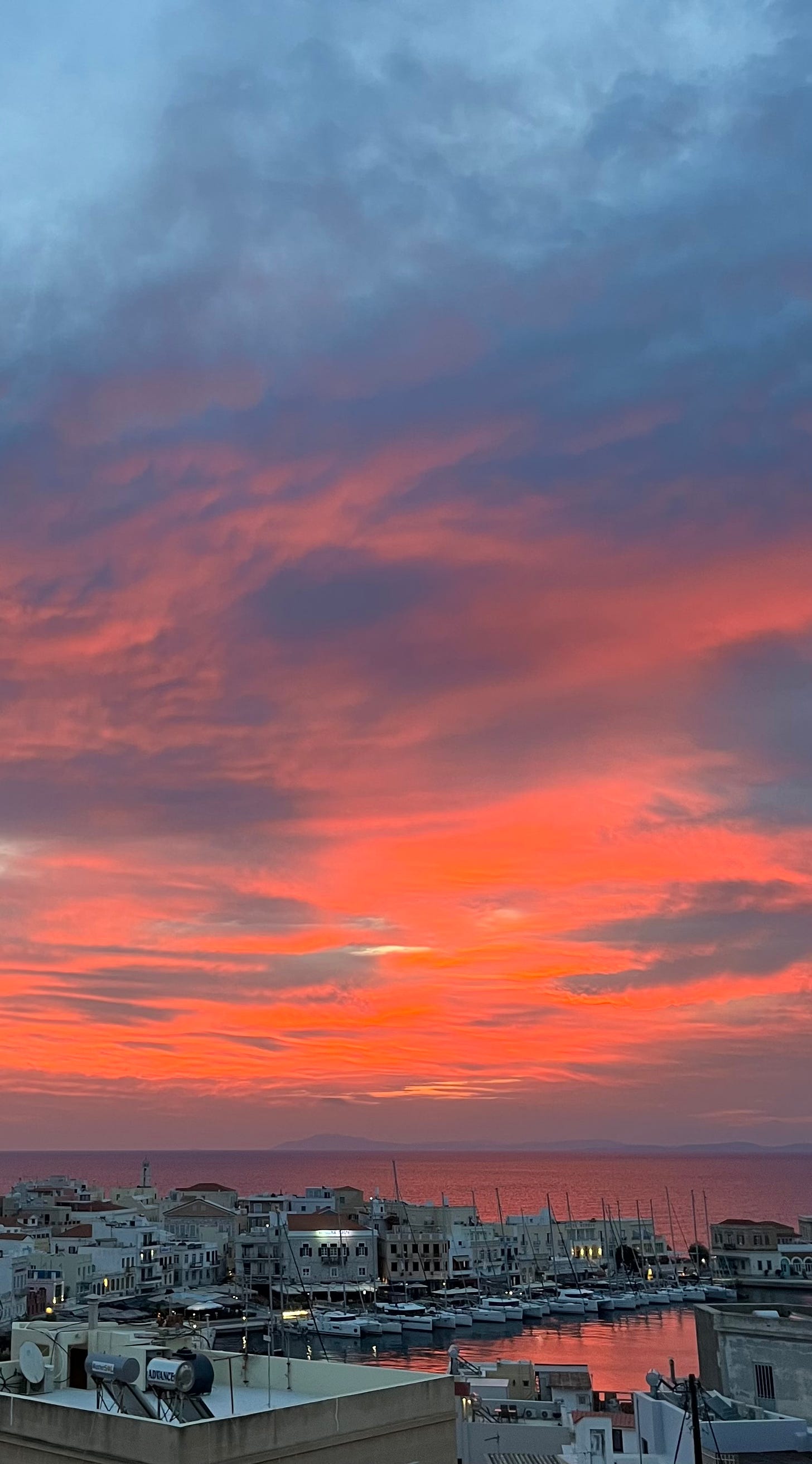
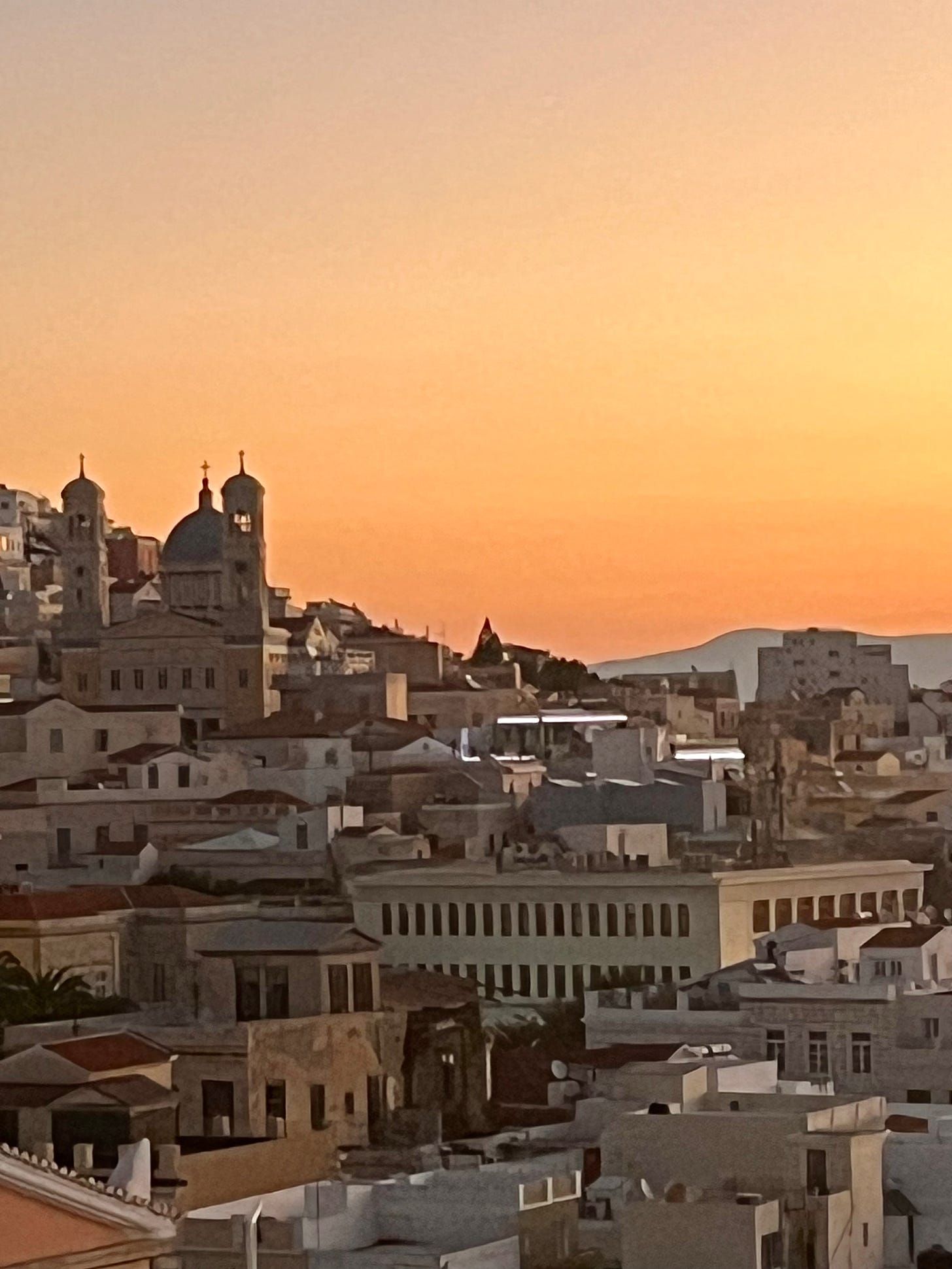
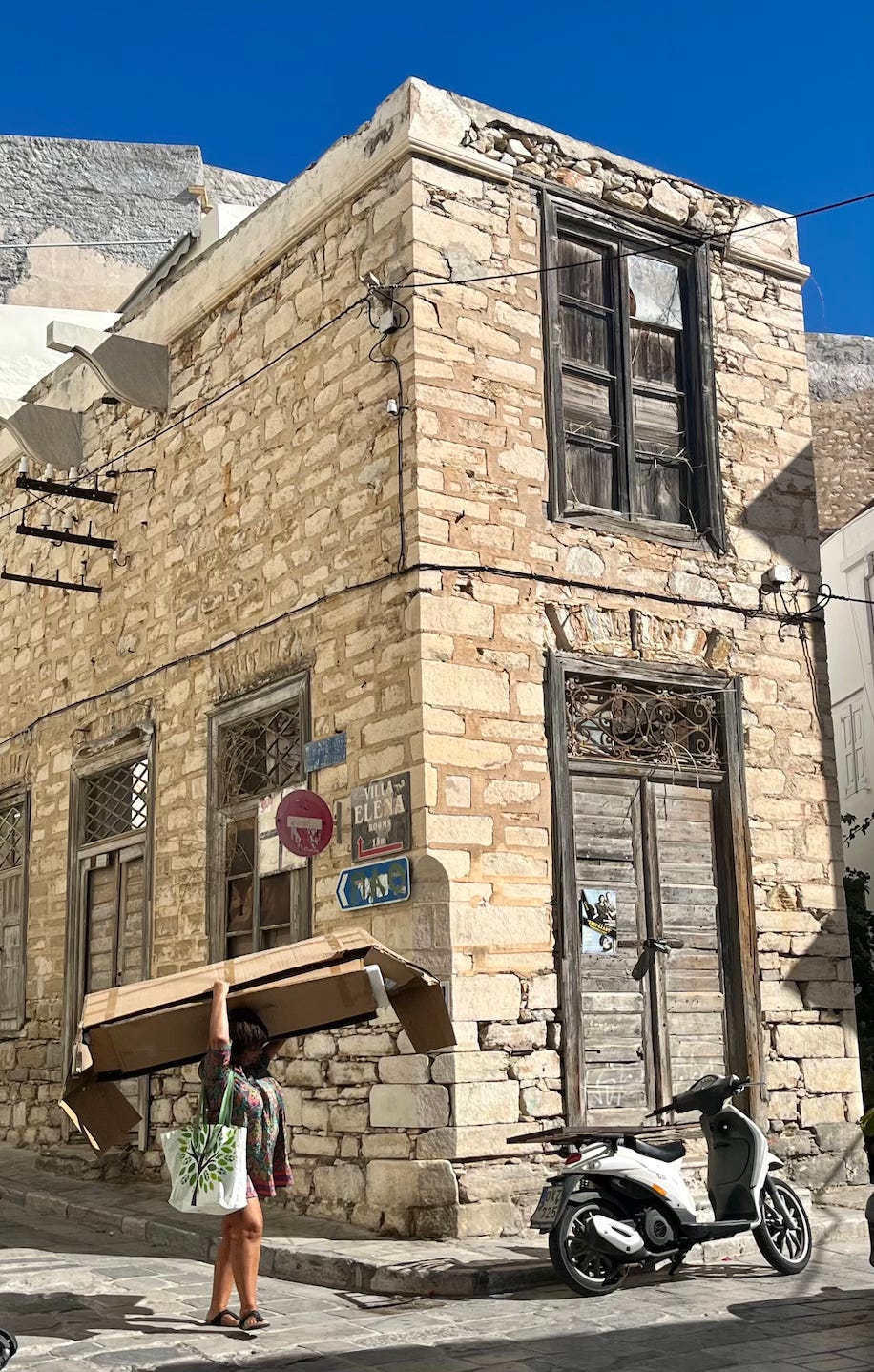
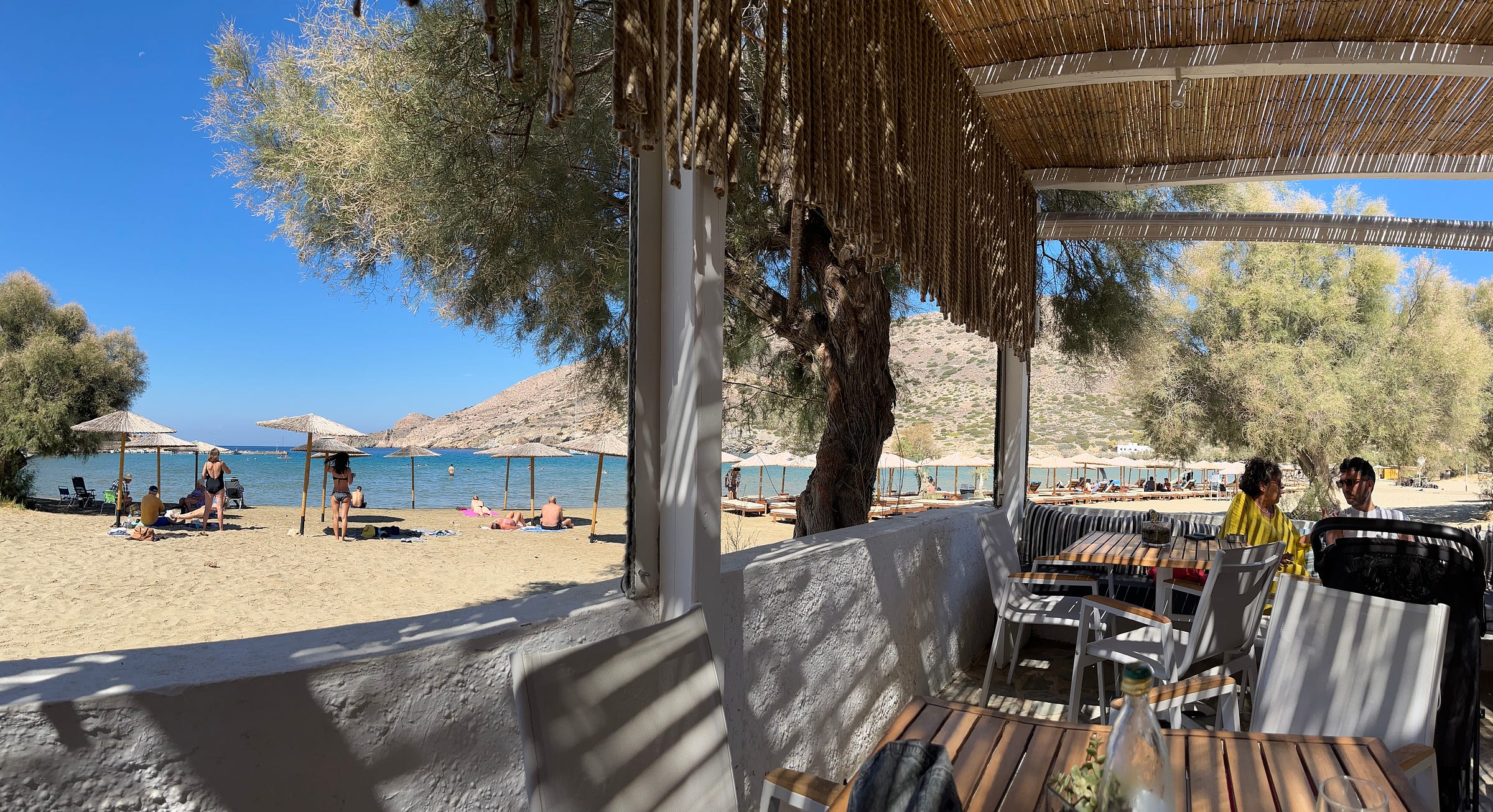
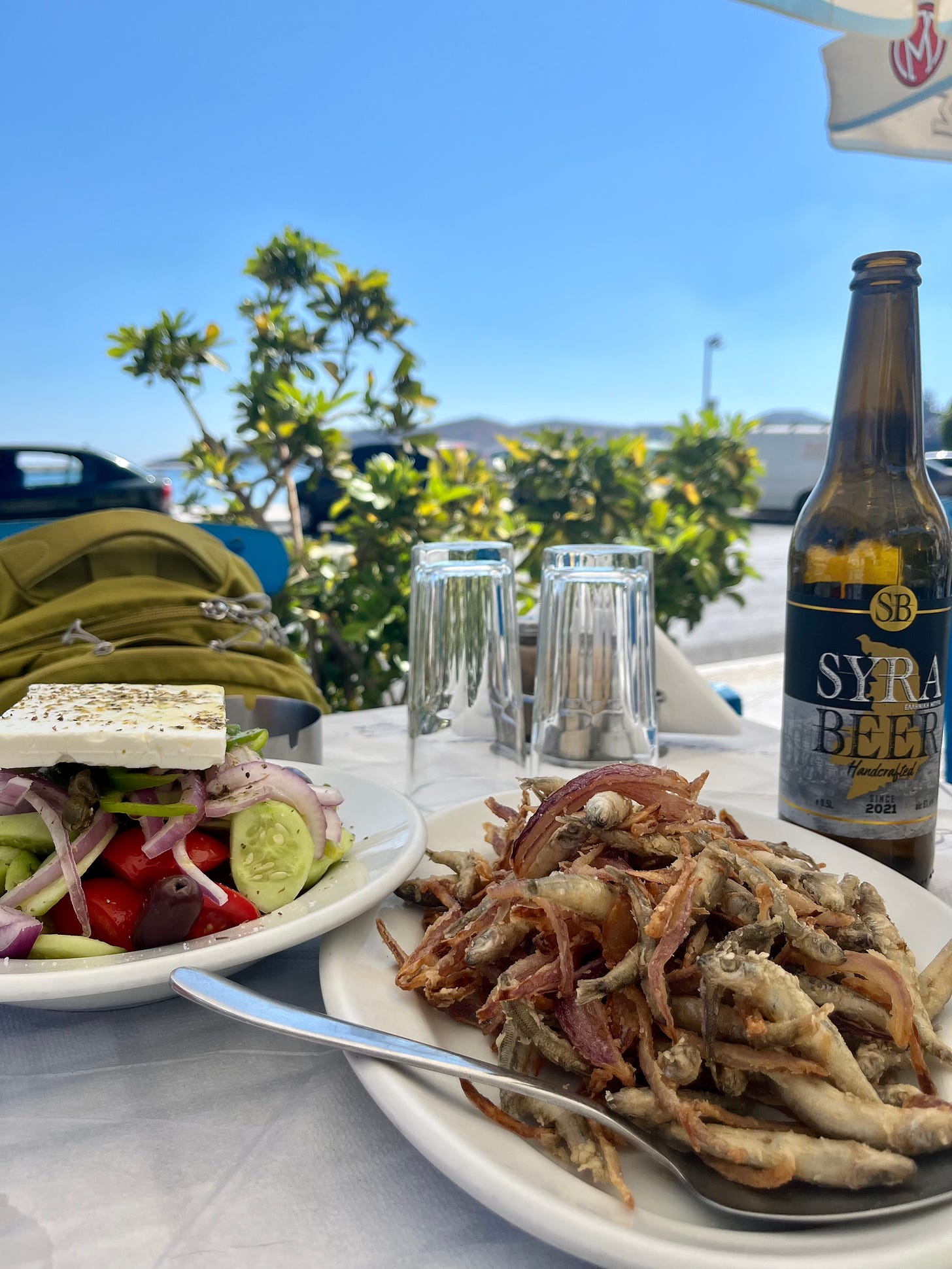
Your photos are so exquisite. We actually stayed on Syros long ago, looking for a quiet, untouristy island, and this was the ticket. Stayed in an old captain's house turned small hotel up a hill, not too far away, overlooking the sea and close to a ramp that took us down to (you are so right) the stony 'beach.' Loved the food, the slow crawl of this island's life, and think there were only small local cruise ships that came in sporadically but thankfully left around 5. Your food photos made me want to faint. Ohh, so good. Also, i love your new name! Nomad Foodies is so perfect!
Fantastic pictures. Once again, one of your posts has left me roiled by a combination of jealousy and wanderlust (complimentary 😂)
Congrats on the rebranding!